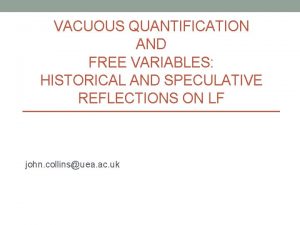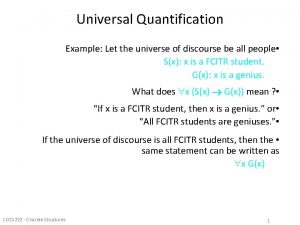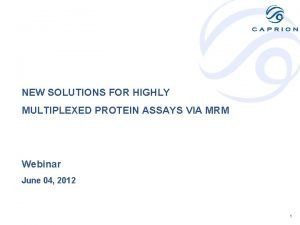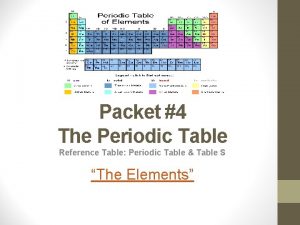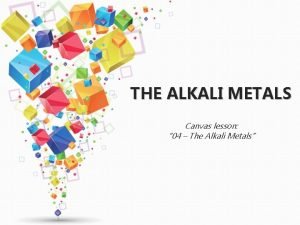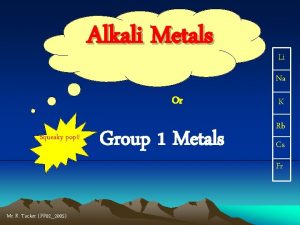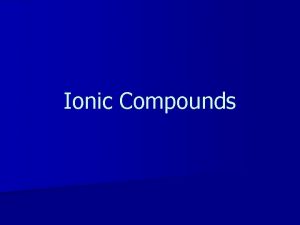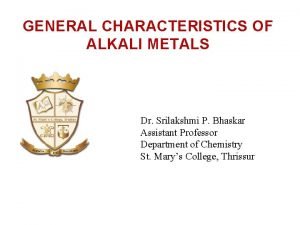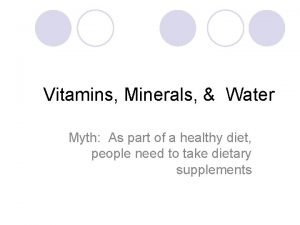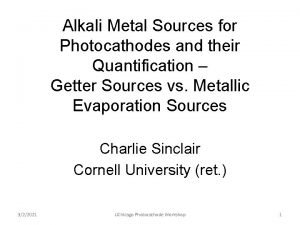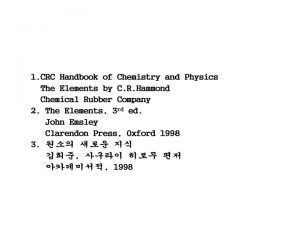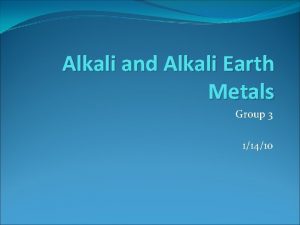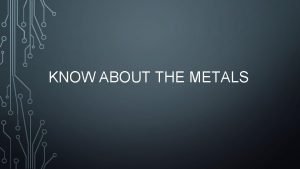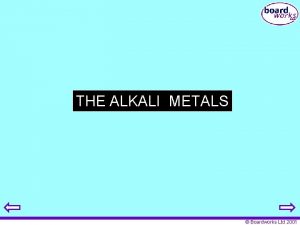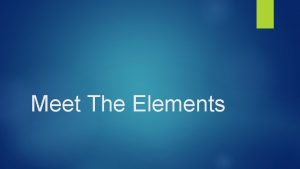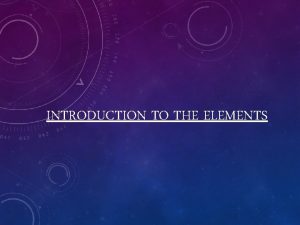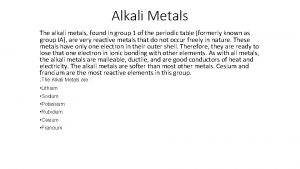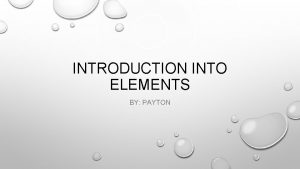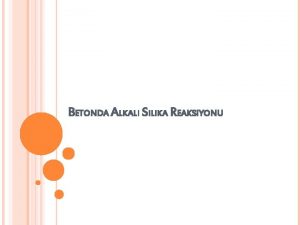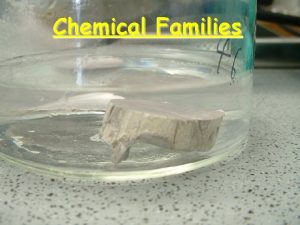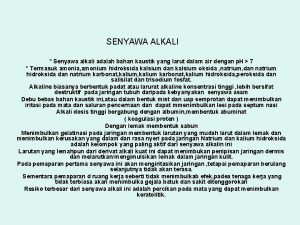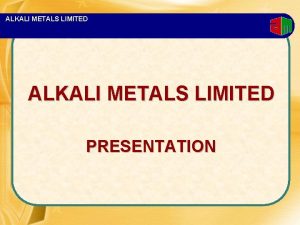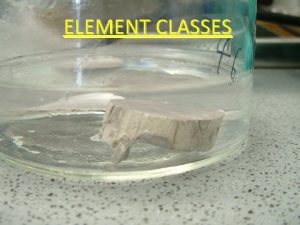Alkali Metal Sources for Photocathodes and their Quantification

















- Slides: 17

Alkali Metal Sources for Photocathodes and their Quantification – Getter Sources vs. Metallic Evaporation Sources Charlie Sinclair Cornell University (ret. ) 11/9/2020 UChicago Photocathode Workshop 1

Alkali (Na, K, Rb, Cs) Characteristics • Low melting temperature • High vapor pressure • Very high reactivity with most substances, metals and oxides in particular • Most compounds are hydroscopic • Form alloys with one another that are liquid at room temperature over a broad composition range 11/9/2020 UChicago Photocathode Workshop 2

Alkali Metal Vapor Pressure The vapor pressure of all liquid alkali metals is given by: Log 10 P(Torr) = A + B/(273 + T(o. C)) 11/9/2020 MEMTAL Metal AA B B Sodium 7. 585 -5377 Potassium 7. 283 -4453 Rubidium 7. 193 -4040 Cesium 7. 046 -3830 UChicago Photocathode Workshop 3

Metallic Cesium Source Construction 11/9/2020 UChicago Photocathode Workshop 4

Cesium source on electron gun 11/9/2020 UChicago Photocathode Workshop 5

Operation of Metallic Cs Source • Maintain delivery tube and nozzle at ~ 250 C, valve at about 230 C, and Cs tube to give desired vapor pressure. • Temperature maintained continuously, resulting in fairly quick response (seconds) to opening the valve • Delivered ~ 1 monolayer (for Ga. As cathode) in ~ 1 minute • Used to make uniform QE on 35 mm Ga. As by bouncing Cs off heated plate 11/9/2020 UChicago Photocathode Workshop 6

Quartz Crystal Microbalance • Resonant frequency shifts downward as mass is added. For our 6 MHz crystal, 10 Hz is ~ 100 ngm ~ 1 monolayer of Cs. • Uncertainties are the number of atoms per monolayer, and the sticking coefficient (~1 for alkalis) • Measured at ~ 290 K and 77 K, getting same result, implying a sticking coefficient ~ 1 11/9/2020 UChicago Photocathode Workshop 7

Temperatures for other alkalis • A Cs vapor pressure of 3 to 6 x 10 -4 Torr delivered ~ 1 monolayer/minute, with the Cs reservoir between 90 and 100 o. C • Similar vapor pressures would require reservoir temperatures of ~ 100 to 111 o. C for Rb, ~ 139 to 151 o. C for K, and ~ 211 to 224 o. C for Na, with correspondingly higher valve and delivery tube temperatures 11/9/2020 UChicago Photocathode Workshop 8

Checking purity and contamination • Use quadrupole residual gas analyzer • SRS 200 amu with electron multiplier is the best instrument on the market • Can see alkalis and impurities easily to very low partial pressures (<10 -13 Torr) • Calibrate with Xenon, which has nine stable isotopes with an abundance ratio of about 300 11/9/2020 UChicago Photocathode Workshop 9

Langmuir-Taylor hot wire detector • Measure one dimensional beam profile with 50 -100 mm precision • The ratio of ions/neutrals leaving a surface at temperature T is: exp(e(I-f)/k. T) • Suitable wires are W (4. 55 ev), Ir (5. 27 e. V), and Pt (5. 65 e. V) • Alkali ionization potentials are: Na (5. 139), K (4. 341), Rb (4. 177), and Cs (3. 894) e. V 11/9/2020 UChicago Photocathode Workshop 10

Hot Wire Signal • A cesium source delivering 1 monolayer per minute provides about 1013 atoms per cm 2 per second to the delivery area • Cs detection efficiency with a W wire at 1000 K is >99. 9% • A 1 cm length of 100 mm diameter wire will intercept ~ 1011 e/sec, or 16 n. A 11/9/2020 UChicago Photocathode Workshop 11

SAES Cs Yield vs. Time 11/9/2020 UChicago Photocathode Workshop 12

Experience with SAES Cs Sources • Used for more than ten years for making Ga. As photocathodes (which require ~ 1 monolayer of Cs per cathode) • Used only short length strips – 25 mm or less • Consistent Cs delivery performance, typically “yo-yo-ing” between 3. 00 and 3. 25 A • Zero evidence of any harmful contaminants – cathodes had 1/e dark lifetimes > 22, 000 hours in actively pumped electron guns 11/9/2020 UChicago Photocathode Workshop 13

SAES Temperature vs. Current ~ 1 m. l. per minute “No” Cs 11/9/2020 UChicago Photocathode Workshop 14

SAES Cs Source Experience, cont’d. • Two strips mounted parallel to each other, in series electrically, gave good QE uniformity on larger area cathodes • Strips can be exposed to atmospheric pressure backfills multiple times, and still be used to deliver clean Cs to cathodes. Venting was to liquid nitrogen boiloff gas, but air (O 2, H 2 O, CO 2, etc. ) clearly was present. 11/9/2020 UChicago Photocathode Workshop 15

Transverse Diffusion • Cs on Ga. As shows NO surface mobility (Mainz, Jlab, Cornell) • Li on Cu shows NO surface mobility (SLAC) 11/9/2020 UChicago Photocathode Workshop 16

Valuable References • Photoemissive Materials, by A. H. Sommer, Robert E. Kreiger Publishing Company, 1980 • Experimental Innovations in Surface Science, by John T. Yates, Springer-Verlag, 1998 • The Physical Basis of Ultrahigh Vacuum, by P. A. Redhead et al. , AIP, 1993 • Handbook of Materials and Techniques for Vacuum Devices, by Walter H. Kohl, AIP, 1995 11/9/2020 UChicago Photocathode Workshop 17
 Vacuous quantification
Vacuous quantification Universe of discourse examples
Universe of discourse examples Highly multiplexed protein quantification
Highly multiplexed protein quantification Reference table of atomic radii
Reference table of atomic radii Print and web sources
Print and web sources The reactivity of alkali metals
The reactivity of alkali metals Alkali metal color
Alkali metal color Atoms form
Atoms form Order of mobility of alkali metal ions
Order of mobility of alkali metal ions Minerals sources functions and deficiency chart
Minerals sources functions and deficiency chart Examples of macronutrients elements
Examples of macronutrients elements Importance of water sources
Importance of water sources Dp periodic table
Dp periodic table Diamond melting point
Diamond melting point Non metals uses
Non metals uses Is sulfer a metal nonmetal or metalloid
Is sulfer a metal nonmetal or metalloid Metal and non metal definition
Metal and non metal definition Density of metalloids
Density of metalloids
